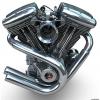Nicotinamide Riboside Attenuates Alcohol Induced Liver Injuries via Activation of SirT1/PGC-1α/Mitochondrial Biosynthesis Pathway
Redox Biology
In Press, Accepted Manuscript, Available online 5 April 2018
Sufan Wang, Ting Wan, Mingtong Ye, Yun Qiua, Lei Peia, d, Rui Jianga, d, Nengzhi Panga, d, Yuanling Huanga, d, Baoxia Liangb, Wenhua Linga, d, Xiaojun Lin
Redox Biology
https://doi.org/10.1...dox.2018.04.006
The metabolism of alcohol is mainly catalyzed by alcohol dehydrogenase (ADH) and aldehyde dehydrogenase (ALDH). During long term heavy drinking or binge drinking, cytochrome P450 2E1 (CYP2E1) is activated, playing a critical role in alcohol metabolism. The metabolism of ethanol increases the conversion of nicotinamide adenine dinucleotide (NAD+) to NADH which decreases the ratio of NAD+/NADH. ... Steatosis induced by high-fat diet triggers the reduction in nicotinamide phosphoribosyl transferase (NAMPT)-mediated NAD+ biosynthesis and contribute to the pathogenesis of type 2 diabetes (...
We fed C57BL/6 J mice with Lieber-DeCarli ethanol liquid diet [35% Calories from alcohol] with or without 400 mg/kg·bw NR for 16 days. ... [E]thanol significantly decreased the expression and activity of hepatic SirT1 and induced abnormal expression of enzymes of lipid metabolism in mice. Both in vivo and in vitro experiments showed that NR activated SirT1 through increasing NAD+ levels, decreased oxidative stress, increased deacetylation of PGC-1α and mitochondrial function. In SirT1 knockdown HepG2 cells, NR lost its ability in enhancing mitochondrial function, and its protection against lipid accumulation induced by ethanol.
Conclusions
NR can protect against ethanol induced liver injuries via replenishing NAD+, reducing oxidative stress, and activating SirT1-PGC-1α-mitochondrial biosynthesis. Our data indicate that SirT1 plays an important role in the protection of NR against lipid accumulation and mitochondrial dysfunctions induced by ethanol.
Before anyone gets too excited, lots of things can reduce the impact of alcoholic liver injury when they're coadministred — including Plain Jane nicotinamide (PMID 9349848) and various GSH precursors. What would be much more interesting and useful would be something that helps to undo the damage inflicted by previous chronic alcohol (ab)use.
Also note that the underlying problem is redox imbalance (low NAD+:NADH) resulting from excess reduction of NAD+ to NADH. It's questionable whether shifting this ratio by incraeasing NAD+, without directly intervening to shift the redox tone, is a sustainable strategy. And it again raises the question of confounding by the NNT mutation.
































 This topic is locked
This topic is locked



















